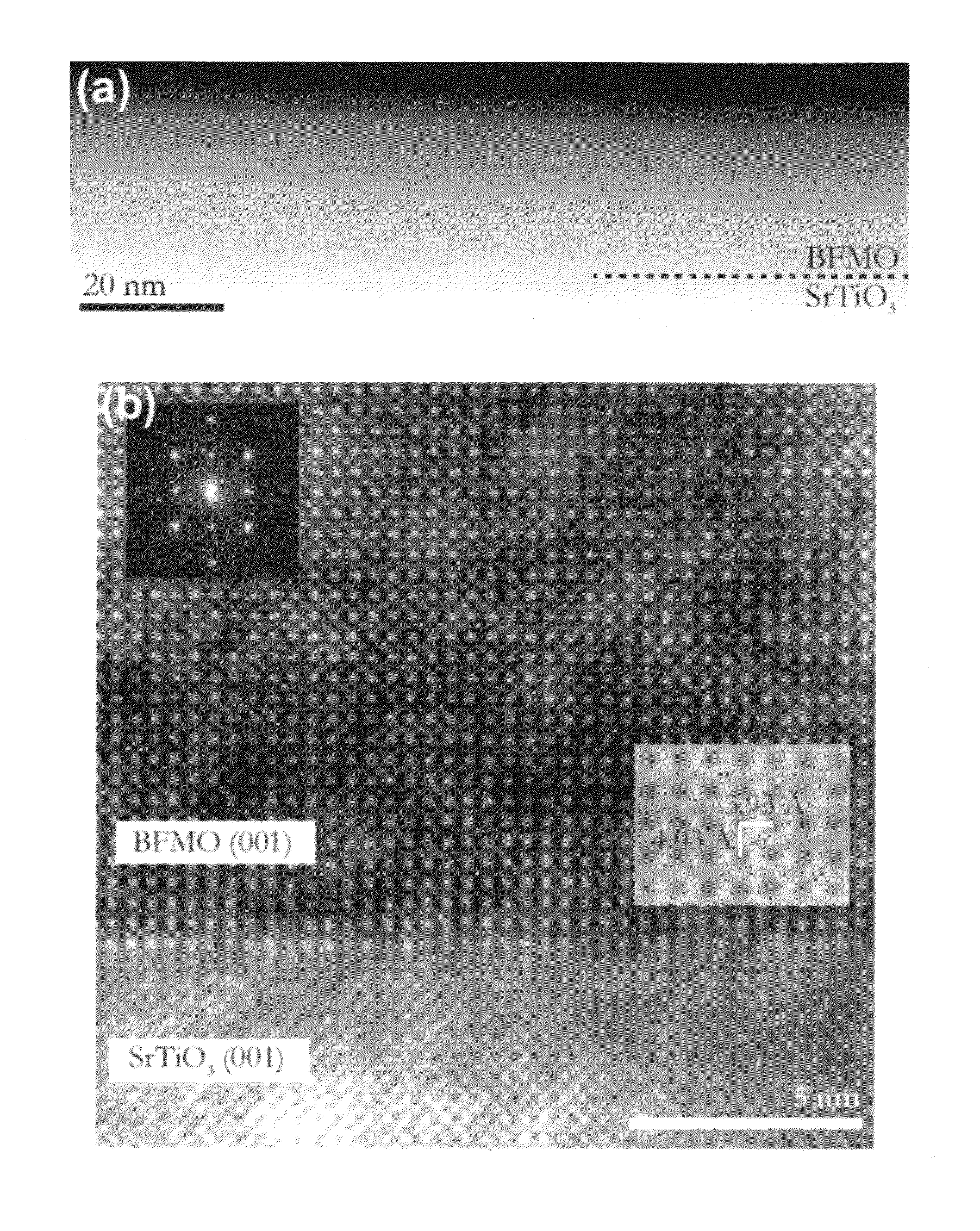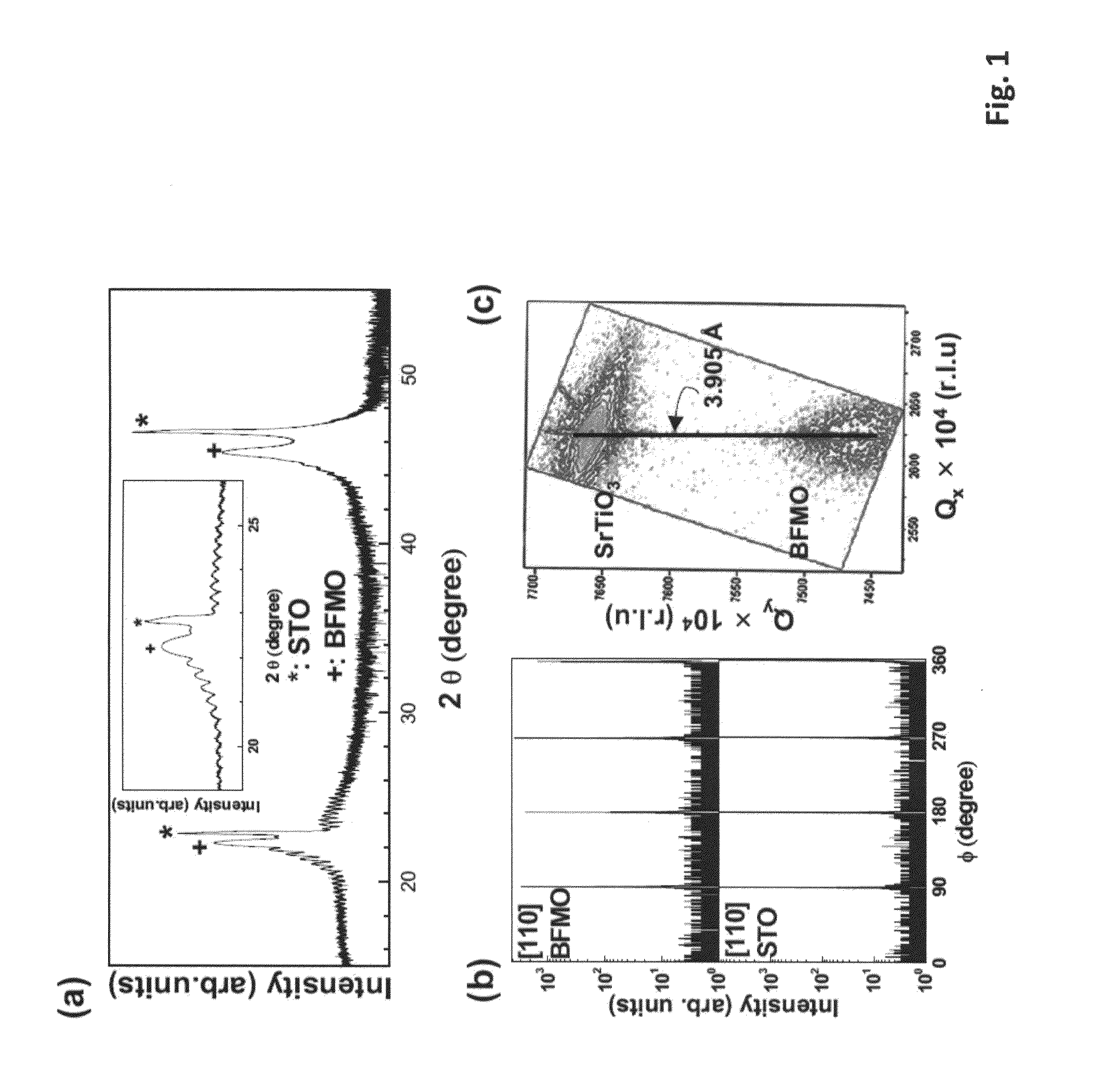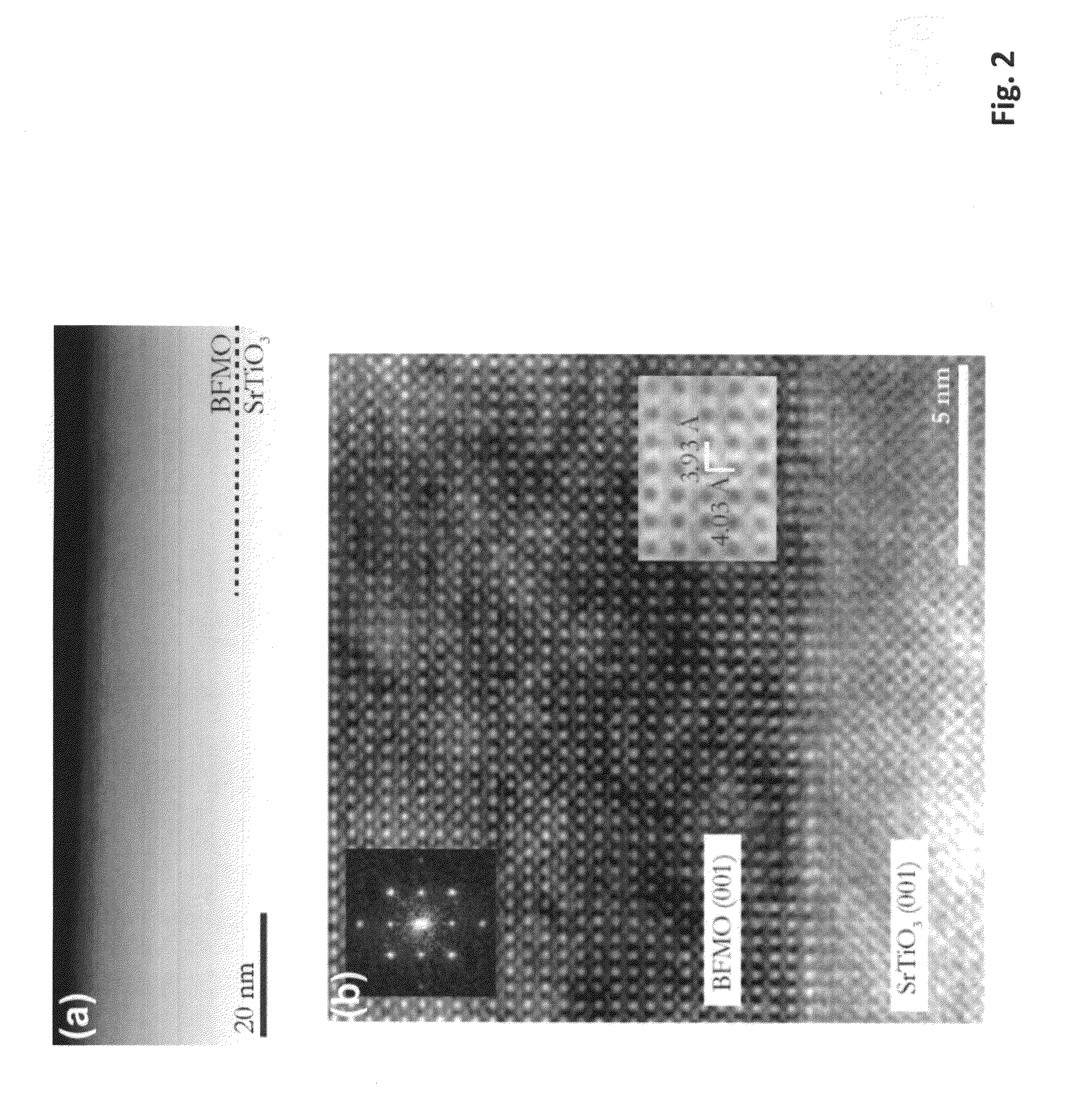Multiferroics that are both ferroelectric and ferromagnetic at room temperature
- Summary
- Abstract
- Description
- Claims
- Application Information
AI Technical Summary
Problems solved by technology
Method used
Image
Examples
example 1
[0030]An article with a 17-nanometer (17-nm) thick strained, single phase epitaxial BiFe0.5Mn0.5O3 film on single crystal SrTiO3 substrate was prepared as follows. A single crystal (100) oriented SrTiO3 (“STO”) was used as the substrate. The BiFe0.5Mn0.5O3 film was deposited on STO by pulsed laser deposition using a KrF excimer laser (λ=248 nm). A substrate temperature of 820° C. and oxygen pressure of 100 mTorr were used during the deposition. The pulse rate was 10 Hz. A total deposition time of 83 minutes resulted in a 17-nm thick BiFe0.5Mn0.5O3 film. After the deposition, the resulting article was cooled in an oxygen atmosphere of 200 Torn The BiFe0.5Mn0.5O3 film shows single phase and epitaxy as proved by x-ray diffraction. The article showed ferromagnetic properties at room temperature as confirmed by magnetic hysteresis. It is expected that the article is also ferroelectric (since the substrate is the same structure and lattice parameters as the Nb doped STO substrate samples ...
example 2
[0031]An article with a 35-nm thick strained, single phase epitaxial BiFe0.5Mn0.5O3 film on single crystal SrTiO3 substrate was prepared as follows. A single crystal (100) oriented SrTiO3 (STO) was used as the substrate. The BiFe0.5Mn0.5O3 film was deposited on STO by pulsed laser deposition using a KrF excimer laser (λ=248 nm). A substrate temperature of 820° C. and oxygen pressure of 100 mTorr were used during the deposition. The pulse rate was 10 Hz. A total deposition time of 166 minutes resulted in a 35-nm thick BiFe0.5Mn0.5O3 film. After the deposition, the resulting article was cooled in an oxygen atmosphere of 200 Torr. The BiFe0.5Mn0.5O3 film shows single phase and epitaxy as proved by x-ray diffraction. The article shows ferromagnetic properties at room temperature as confirmed by magnetic hysteresis behavior. It is expected that the article is also ferroelectric (since the substrate is the same structure and lattice parameters as the Nb doped STO substrate samples which w...
example 3
[0032]An article with a 35-nm thick strained, single phase epitaxial BiFe0.5Mn0.5O3 film on single crystal Nb-doped SrTiO3 substrate was prepared as follows. A single crystal (100) oriented Nb-doped SrTiO3 (Nb:STO) was used as the substrate. The BiFe0.5Mn0.5O3 film was deposited on Nb:STO by pulsed laser deposition using a KrF excimer laser (λ=248 nm). A substrate temperature of 820° C. and oxygen pressure of 100 mTorr were used during the deposition. The pulse rate was 10 Hz. A total deposition time of 166 minutes resulted in a 35-nm thick BiFe0.5Mn0.5O3 film. After the deposition, the resulting article was cooled in an oxygen atmosphere of 200 Torr. The BiFe0.5Mn0.5O3 film showed single phase and epitaxy as proved by x-ray diffraction. The article showed ferromagnetic properties at room temperature as confirmed by magnetic hysteresis behavior.
PUM
| Property | Measurement | Unit |
|---|---|---|
| Temperature | aaaaa | aaaaa |
| Temperature | aaaaa | aaaaa |
| Temperature | aaaaa | aaaaa |
Abstract
Description
Claims
Application Information
 Login to View More
Login to View More - R&D
- Intellectual Property
- Life Sciences
- Materials
- Tech Scout
- Unparalleled Data Quality
- Higher Quality Content
- 60% Fewer Hallucinations
Browse by: Latest US Patents, China's latest patents, Technical Efficacy Thesaurus, Application Domain, Technology Topic, Popular Technical Reports.
© 2025 PatSnap. All rights reserved.Legal|Privacy policy|Modern Slavery Act Transparency Statement|Sitemap|About US| Contact US: help@patsnap.com



